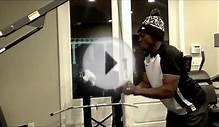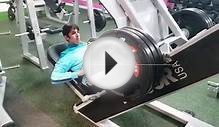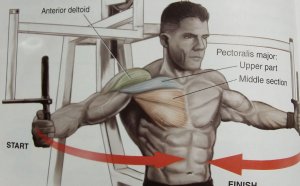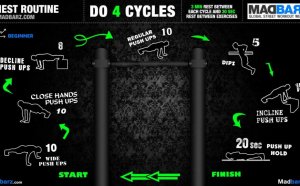
Chest Workout for mass and definition
How much can you bench? This is the all-to common question we all know to be used as a gauge of total body strength or manhood. However, in this article, I hope to engage and gravitate your attention to some of my secrets to building a wonderfully sculpted and impressive treasure chest!
Like any treasure chest, one has to dig deep to find it, pun intended! How much one can bench is less important, which may be a relief to many who can not bench as much as their peers. Now, the reason why I am writing on chest training is twofold:
- I love writing and sharing my ideas and research-based standpoints on various topics.
- I felt that more people enjoy training articles because of the immediate practicality of them (i.e. I got a lot of positive feedback from my upper back training article).
- Determine an appropriate strength level that will allow chest development to be seen (chest mass).
- Train chest with enough intensity and volume to induce great definition.
- Hit the chest from different grips and body planes.
- Balance your chest training with back training to be at a ratio of 2-or 3-to-1. In other words, for every chest exercise, you should do 2-3 back exercises.
- Work on your posture and train your rotator cuff. These 4 muscles are so intricate and important in maintaining shoulder health and integrity and allowing one to train chest for a long-time to come.
1 An Appropriate Strength Level For Chest
As opposed to referring to absolute weight values, this only serves to discriminate and bias each individual. We know everyone is different. So how can we come up with a gold standard or bar to set for everyone across the board for determining how much one should be able to bench?
Well, contrary to popular opinion, I like to use relative strength as a gauge. Research has shown that in a sample of Caucasian males aged 20-29, 1.48 or greater is the 90th percentile, while 1.06 is average (Cooper Institute for Aerobics Research, 1994). 1.48 (ratio derived from 1RM/bodyweight; i.e. 160 lb male/240 1RM bench press = 1.5).
The number declines slightly with age. However, the point is that a 200 lb man who can bench 315 lbs is weaker than a 140 lb man who can bench 225 lbs. Now we have a level playing field with regard to how much one can bench, and also, you might want to take a look at the impressiveness of the 140 lb guy's chest in comparison to the 200 lb guy's chest.
In all probability, the 140 lb guy's chest will have striations and upper-lower pectoral separation, whereas the 200 lb guy will likely have one blob of chest mass and no kind of striations. Muscle density (quality) is more impressive than muscle mass (quantity).
2 Intensity Vs. Volume
Which is better? I'd say both are equally as important. Be sure to have high-volume chest workouts and low-volume chest workouts. Hormonally, both will elicit favorable adaptations; low-volume high-load training will induce a nice testosterone response (Kraemer, 2000), while high-volume, low-moderate load training will induce a nice growth hormone response (Kraemer et al., 1993).
Use the shock principle too (Schwarzenegger, 1998). For example, pre-fatiguing the chest will make it work harder. A sample routine would be starting your workout with dumbbell chest flyes for 2-3 sets, and then doing barbell or dumbbell bench press.
I know from personal experience this routine works wonders. I know because many of you probably have experienced more anterior deltoid soreness on many occasions after a typical chest workout. However, after this pre-fatigue workout, I was not sore in the delts at all, but my chest was sore!
Another routine could be super-slow reps. Research has shown this type of training to certainly have positive effects on strength and metabolic rate (Hutchins, 1992; Ward, 2004; Westcott et al., 2001).
INTERESTING VIDEO



Share this Post
Related posts
Chest Workout for definition
Has never been complex, he always focused on the basics. So if you want to get a big chest, we prepared you a workout inspired…
Read MoreBodyweight Workout for mass
It’s important to note that bodyweight training is by no means a replacement for lifting, but rather another tool for muscular…
Read More









